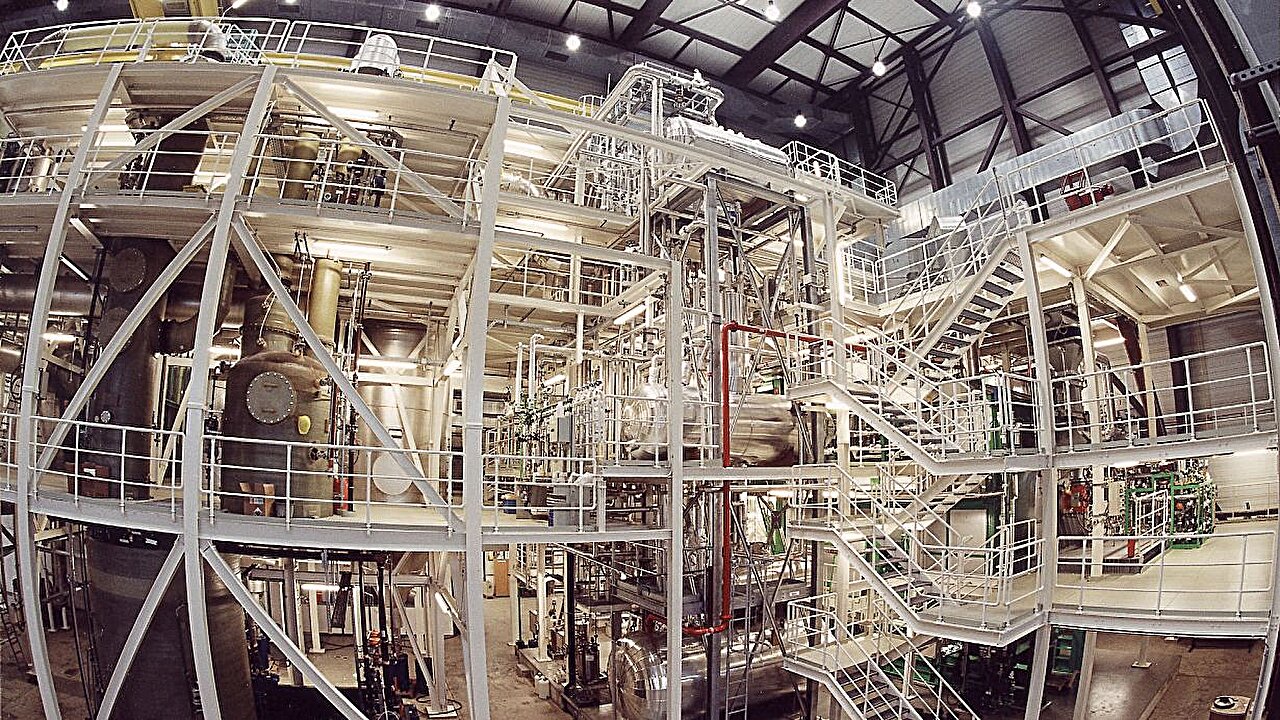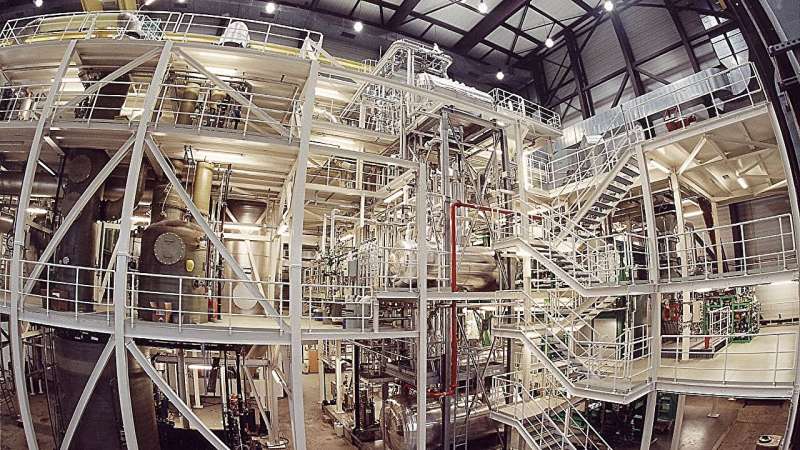

Fluoropolymers have become an integral part of modern society, both in industrial and consumer applications. When these high-performance materials reach the end of their useful life, they can end up in both industrial and household waste.
Working with international partners, researchers at the Karlsruhe Institute of Technology (KIT) analyzed the contribution of waste incineration of fluoropolymers to the release of low-molecular, non-polymeric fluorinated compounds.
Their experiments with the BRENDA incineration facility at KIT showed nearly complete destruction of fluoropolymers in combustion at the temperatures and residence times typical of European incinerators. The study has been published in the journal Chemosphere.
In contrast to fluoropolymers, which are also referred to as “polymeric PFAS” and are considered to be non-mobile and non-bioaccumulative, used e.g. in medical products, semiconductors, aerospace, automotive and chemical processing, “low-molecular PFAS” are integrated in a wide range of dispersive consumer applications.
They are found, for instance, as water-repellent impregnation in textiles, garments, paper (pizza boxes, burger boxes, baking backpaper). The PFAS substance group includes approximately 10,000 substances, whereby the fluoropolymers only represent a small subgroup of 38 substances.
Some of the low molecular weight PFAS are harmful to health and have been linked to organ damage and cancer. Low molecular weight PFAS accumulate in groundwater and soil, leading to environmental problems in many locations and can affect the health of the population, whereas fluoropolymers have a very large molecular weight and, therefore, they are considered safe for the health and environment.
Researchers investigate efficiency of combustion processes
A research team headed by Dr. Hans-Joachim Gehrmann from KIT’s Institute for Technical Chemistry (ITC) has analyzed whether and to what extent low molecular weight PFAS are released into the environment by incineration of fluoropolymers.
In cooperation with Gujarat Fluorochemicals, a leading Indian producer of fluoropolymers, the scientists performed tests using the BRENDA pilot-scale incineration facility at KIT. In their tests, the researchers burned fluoropolymers and then measured PFAS concentration in scrubber water, ash and flue gas.
The aim of the experiments was to determine if standard combustion conditions of municipal and industrial waste incinerators are sufficient for complete mineralization of fluoropolymers.
Representative fluoropolymer mix
The researchers performed their experiments at two different temperatures: 860 degrees Celsius, which corresponds to European standards for household waste incineration, and 1,095 degrees Celsius, a typical temperature for hazardous waste incineration. In both cases, the minimum residence time for flue gas in the combustion chamber was two seconds.
“We demonstrated that a fluoropolymer reduction rate of over 99.99% can be reached at a combustion temperature of 860 degrees Celsius and a residence time of two seconds. That means we achieved nearly complete mineralization of the fluoropolymers under conditions typical of municipal waste incineration,” Gehrmann said.
“Combustion at 1,095 degrees Celsius did not result in a significantly higher reduction rate, suggesting that a higher temperature does not have a major impact on fluoropolymer mineralization.”
For its combustion chamber experiments, the team chose a representative sample covering 80% of the fluoropolymers used commercially worldwide, including polytetrafluoroethylene (PTFE, also known as Teflon), polyvinylidene fluoride (PVDF), perfluoro alkoxy alkane (PFA) and fluoroelastomers (FKM).
Samples were taken at several stages in the combustion process: post-combustion chamber exit, downstream from the boiler, and from flue gas in the stack. The team also analyzed samples from wastewater and solid residues. Analytical methods such as gas chromatography coupled with mass spectrometry were used to identify and precisely quantify PFASs.
“The results are good news for the complete removal of fluoropolymers in municipal waste incineration according to European standards,” Gehrmann said. However, he noted, “There are other ways for PFASs to get into the environment, and they need to be analyzed and assessed.”
More information:
Hans-Joachim Gehrmann et al, Mineralization of fluoropolymers from combustion in a pilot plant under representative european municipal and hazardous waste combustor conditions, Chemosphere (2024). DOI: 10.1016/j.chemosphere.2024.143403
Provided by
Karlsruhe Institute of Technology
Citation:
Analysis shows no significant PFAS emissions under approved waste incineration conditions (2024, October 24)
retrieved 24 October 2024
from https://phys.org/news/2024-10-analysis-significant-pfas-emissions-incineration.html
This document is subject to copyright. Apart from any fair dealing for the purpose of private study or research, no
part may be reproduced without the written permission. The content is provided for information purposes only.